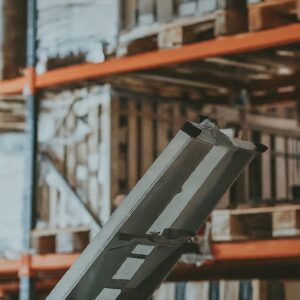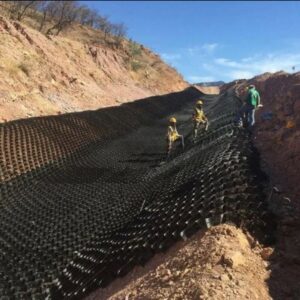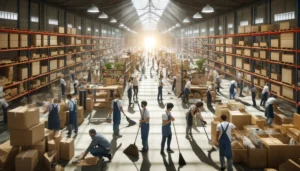
Climbing to New Heights: A Comprehensive Guide to Industrial Ladders
Ever had one of those heart-stopping moments when you’re perched precariously on a ladder, wondering if it’s sturdy enough to hold you? As someone who’s
In the industrial world, efficiency, safety, and accessibility are paramount. Industrial ladders play a pivotal role in meeting these needs, providing the backbone for maintenance, storage, and operations across various sectors. From the sprawling floors of manufacturing plants to the organized aisles of warehouses, industrial ladders help businesses reach new heights—literally and metaphorically. This article explores the indispensable role of industrial ladders in these settings, highlighting their versatility, types, and the considerations for their selection and use.
Industrial ladders are more than just tools; they are integral components of operational efficiency and safety in manufacturing plants and warehouses. Their versatility and adaptability to various tasks and environments make them indispensable in the industrial sector. By understanding the types of ladders available, their specific uses, and the best practices for their selection and maintenance, businesses can ensure a safer, more efficient workplace.
Q1: Why are industrial ladders essential in manufacturing plants and warehouses?
A1: Industrial ladders are crucial for maintaining operational efficiency, safety, and accessibility. They enable workers to perform maintenance, access high areas safely, manage inventory, and maximize the use of vertical space in storage areas.
Q2: What types of industrial ladders are most commonly used in these environments?
A2: The most common types include step ladders, platform ladders, extension ladders, and specialty ladders, each serving specific purposes ranging from quick access to high shelves to performing maintenance tasks safely.
Q3: How do I choose the right ladder for my needs?
A3: Selecting the right ladder involves considering several factors, including the ladder’s material (aluminum or fiberglass), height, load capacity, and specific safety features. The choice depends on the nature of the tasks, the environment in which the ladder will be used, and the physical requirements of those tasks.
Q4: Are there different safety considerations for using ladders in manufacturing plants versus warehouses?
A4: While many safety considerations overlap, such as ensuring stability and using ladders as per the manufacturer’s guidelines, certain environments may have specific risks. For instance, manufacturing plants may require ladders that are resistant to chemicals or heat, whereas warehouses might prioritize ladders that facilitate easy and safe inventory access.
Q5: What are the most important safety features to look for in an industrial ladder?
A5: Key safety features include slip-resistant steps, handrails for stability, safety locks and braces to prevent accidental folding or extension, and, for some environments, non-conductive materials to prevent electrical hazards.
Q6: How often should industrial ladders be inspected?
A6: Ladders should be inspected regularly for signs of wear and tear, such as cracks, loose components, or corrosion. The frequency of inspections can depend on the ladder’s material and the intensity of its use but generally, a thorough inspection at least once every three months is recommended.
Q7: Can industrial ladders be customized for specific applications?
A7: Yes, specialty ladders can be designed to meet specific industrial needs. This includes ladders for narrow aisles, crossover ladders for navigating obstacles, or ladders with specialized platforms for particular tasks.
Q8: How can businesses ensure that their employees are using ladders safely?
A8: Providing proper training on ladder safety, including the correct way to ascend and descend, how to maintain three points of contact, and understanding the load capacity, is crucial. Additionally, implementing regular safety audits and encouraging a culture of safety can further protect employees.
Q9: What advancements in ladder technology can we expect in the future?
A9: Future advancements may include the integration of more durable and lightweight materials, innovative safety features like automatic locking mechanisms, and designs that further enhance ergonomics and ease of use.
Q10: Where can I find reliable industrial ladders that meet safety standards?
A10: Reliable industrial ladders can be found through specialized equipment suppliers, manufacturers with a strong safety record, and vendors that offer products complying with national and international safety standards. It’s important to purchase ladders that are certified and tested for industrial use.

Ever had one of those heart-stopping moments when you’re perched precariously on a ladder, wondering if it’s sturdy enough to hold you? As someone who’s

Have you ever battled a muddy mess of a driveway after a heavy rain? Or maybe your gravel path constantly seems to wash away. Traditional solutions like gravel or concrete can be expensive, time-consuming to install, and require frequent maintenance. But what if there was a better way?
Enter GeoCell, a revolutionary cellular confinement system that’s transforming the way we build strong, stable, and long-lasting driveways, paths, and even parking areas.

Spring brings fresh beginnings, warmer weather, and the perfect time for decluttering and dusting off neglected spaces. In the world of warehouse organization, implementing genius cleaning tricks can transform chaos into order. This article explores innovative spring cleaning hacks and decluttering tips tailored specifically for warehouses, shedding light on dust off techniques to optimize efficiency and productivity in your storage space.